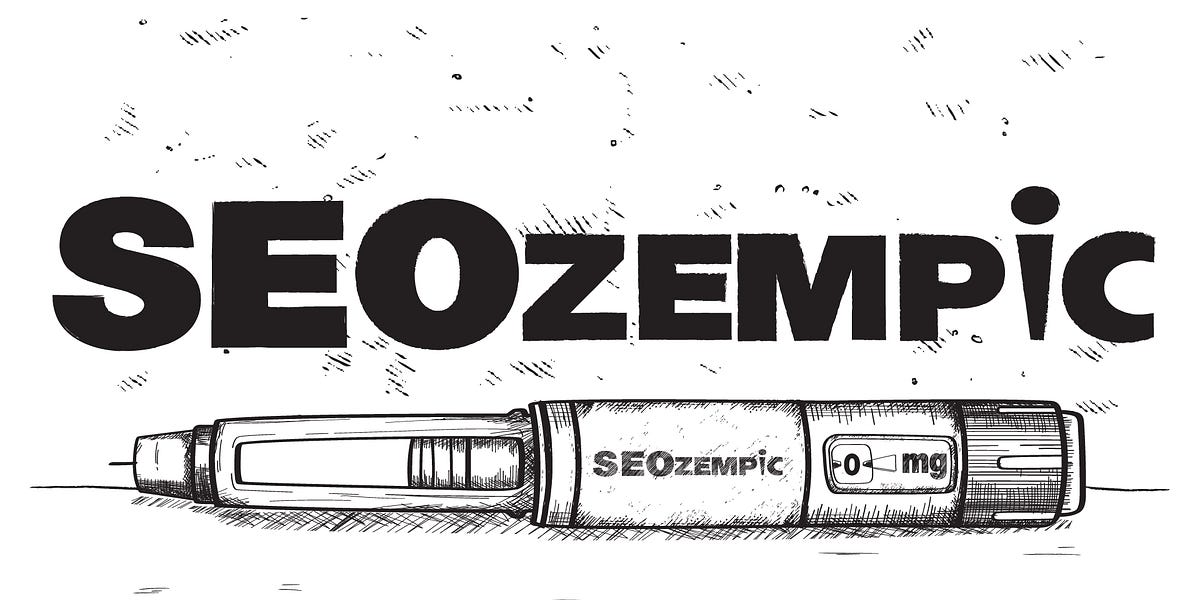SEOzempic

🌈 Abstract
The article discusses the changes in how Google indexes and ranks websites, particularly the increasing emphasis on domain quality as a signal. It covers the following key points:
🙋 Q&A
[01] Changes in Google's Indexing Approach
1. What are the two main trends that have impacted how Google goes about indexing?
- The open web has shrunk, and Google needs to crawl through big content platforms like YouTube, Reddit, and TikTok, which are often built on "complex" JS frameworks, to find new content.
- AI is changing the underlying dynamics of the web by making mediocre and poor content redundant.
2. What has the author noticed about the relationship between indexed pages and organic traffic?
- The author has noticed an inverse relationship between indexed pages and organic traffic, where more pages do not automatically mean better performance.
- The author suggests that the definition of quality has changed, and the stakes for SEOs are high - expanding too aggressively can cause the whole domain to suffer.
3. How has Google's approach to indexing changed over time?
- Before the change, Google indexed everything and prioritized the highest-quality content on a domain.
- Now, a domain and its content need to prove themselves before Google even tries to index them. If a domain has too much low-quality content, Google might index only some pages or none at all in extreme cases.
4. What are the reasons behind Google's new approach to indexing?
- Google wants to save resources and costs as the company moves to an operational efficiency state of mind.
- Partial indexing is more effective against low-quality content and spam.
- If a domain repeatedly produces low-quality content, it doesn't get a chance to pollute Google's index further.
- Google's bar for quality has increased due to the vast amount of content on the web, as well as to optimize its index for RAG (grounding AI Overviews) and train models.
[02] Monitoring Domain Quality
1. How does the author define domain quality? Domain quality is a signal composed of three areas:
- User experience: Are users finding what they're looking for?
- Content quality: Information gain, content design, comprehensiveness
- Technical condition: Duplicate content, rendering, on-page content for context, "crawled, not indexed / discovered", soft 404s
2. What are the key metrics the author recommends for monitoring domain quality? If the author could pick only three metrics, they would measure:
- Inverse bounce rate
- Conversions (soft and hard)
- Clicks + ranks by page type per page against the average
3. Why is monitoring domain quality important? Monitoring is the first step to understanding a site's domain quality. It helps identify areas for improvement, as adding more pages is not always the solution - often, optimizing existing content can be more effective.
4. What are some examples of companies that have improved their organic traffic by optimizing their existing pages?
- Adidas was able to grow organic traffic by optimizing its existing pages.
- Redfin maintained a consistent number of pages while significantly increasing organic traffic.
- Lending Tree and Progressive saw significant gains by reducing pages that didn't meet their quality standards.
[03] The Future of Indexing
1. How has Google's approach to indexing evolved over time?
- Index size used to be a goal early on, but now it's less about indexing as many pages as possible and more about having the right pages.
- Google is becoming pickier about who it lets into the index, and the definition of "good" has evolved.
2. How might the rise of AI Overviews and chatbots impact indexing in the future?
- Assuming LLMs will still need to be able to render pages, technical SEO work remains essential.
- However, the motivation for indexing may shift from surfacing web results to training models, and the value of pages with nothing new to offer will be even closer to zero than today.